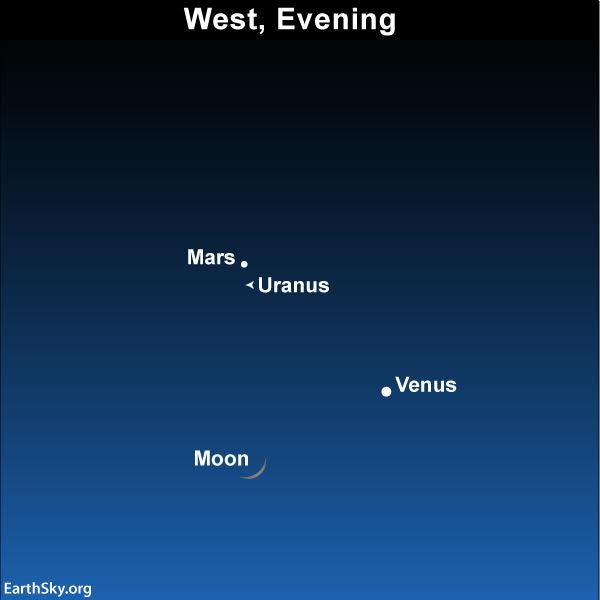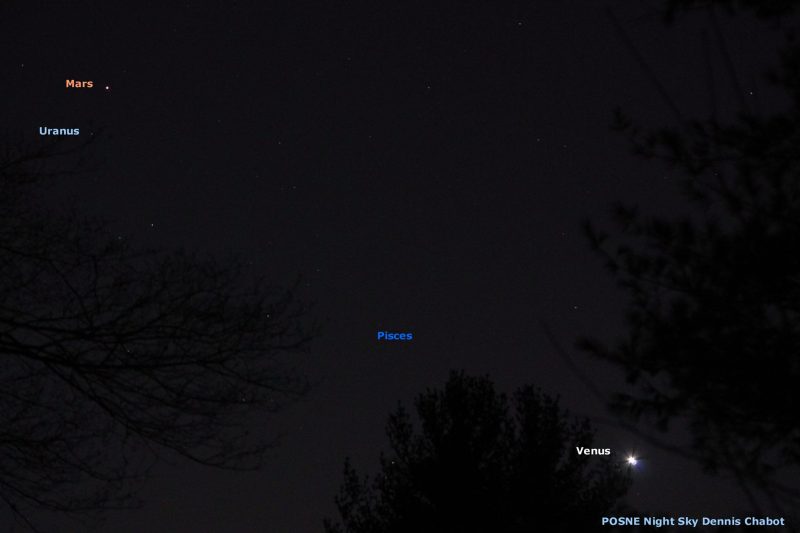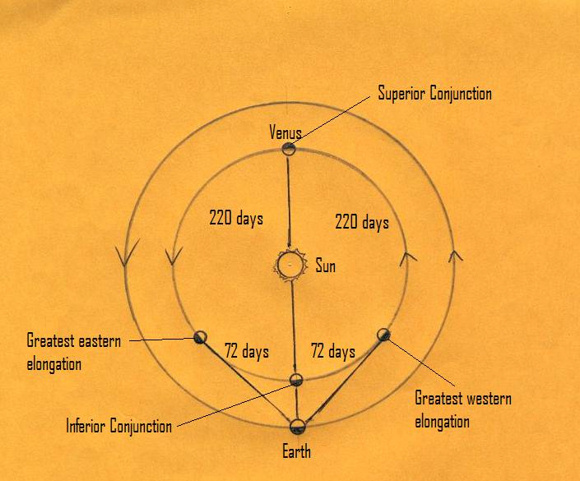Tonight – February 28, 2017 – catch the slender waxing crescent moon and the dazzling planet Venus in the western sky after sunset. The moon and Venus will be the first two celestial objects to pop out at evening dusk. That’s because these two rank as the brightest and second-brightest heavenly bodies to light up the nighttime, respectively.
Then, after night truly falls and it’s dark, try spotting the planets Mars and Uranus in a single binocular field of view …


Do you have a telescope? This is a super time to aim it at Venus. This world will be passing between us and the sun on March 25 and thus, for over a month now, Venus has been displaying a waning crescent phase. In other words, as it nears the (approximate) line between us and the sun, the day side of Venus is shifting more and more away from us.
A telescope reveals Venus as a rather slim crescent. Surprisingly, perhaps, it’s better to look at Venus through a telescope at dusk than at nightfall. The glare of Venus is a bit overwhelming after dark.

Once again, the best time to view Venus with the telescope is dusk, so concentrate on the moon and Venus before nightfall. Tonight – February 28 – Venus’ disk is approximately 17% illuminated by sunshine. However, from now until March 25, Venus’ phase will wane (get thinner) while the angular diameter of its disk will increase.
We give you some idea of what’s ahead by listing the phase and angular diameter for certain dates. Remember that 1o = 60′ and that 1′ = 60″.
February 28, 2017
Venus phase: 17% illuminated
Angular diameter: 47”March 10, 2017
Venus phase: 8% illuminated
Angular diameter: 54”March 20, 2017
Venus phase: 2% illuminated
Angular diameter: 59”
Venus will be very close to one second (1′ = 60″) in diameter for a few weeks, centered on March 25, 2017. It’s said that some people can actually see the crescent with the naked eye (or at least binoculars) when its angular diameter is this large.
Venus will come closest to Earth for the year on March 25, 2017 as it passes (more or less) in between the Earth and sun at inferior conjunction. See the diagram below.
By the way, at his particular inferior conjunction, Venus will pass a whopping 8o north of the sun. That far-northern inferior conjunction will give folks at northerly latitudes (United States, Canada, Europe and northern Asia) a chance to see Venus in both the evening and morning sky for several days in a row, starting on or near March 20.

Bottom line: On February 28, 2017, seek out the moon and Venus at dusk, and then look for Mars and Uranus in the same binocular field at nightfall.











